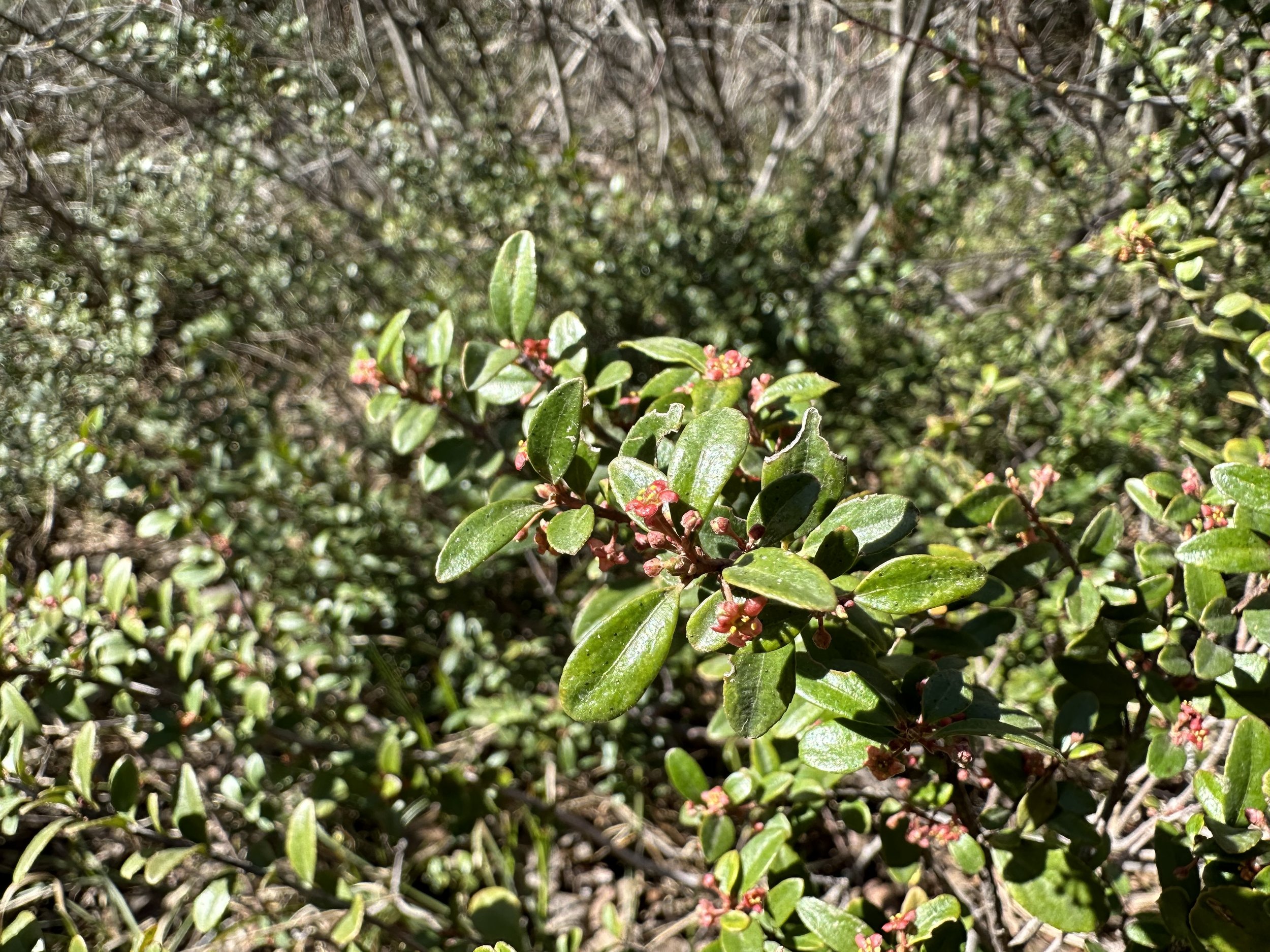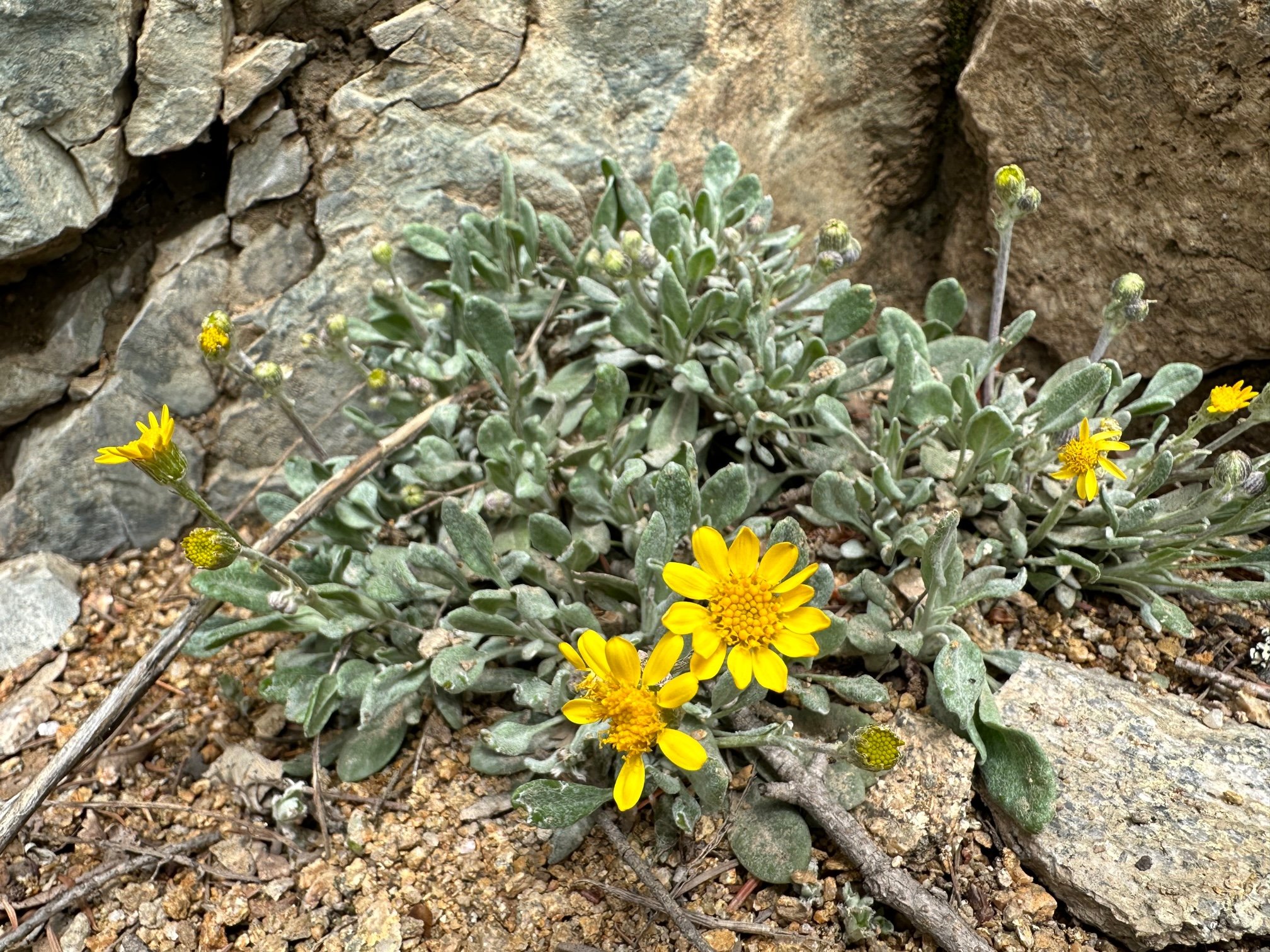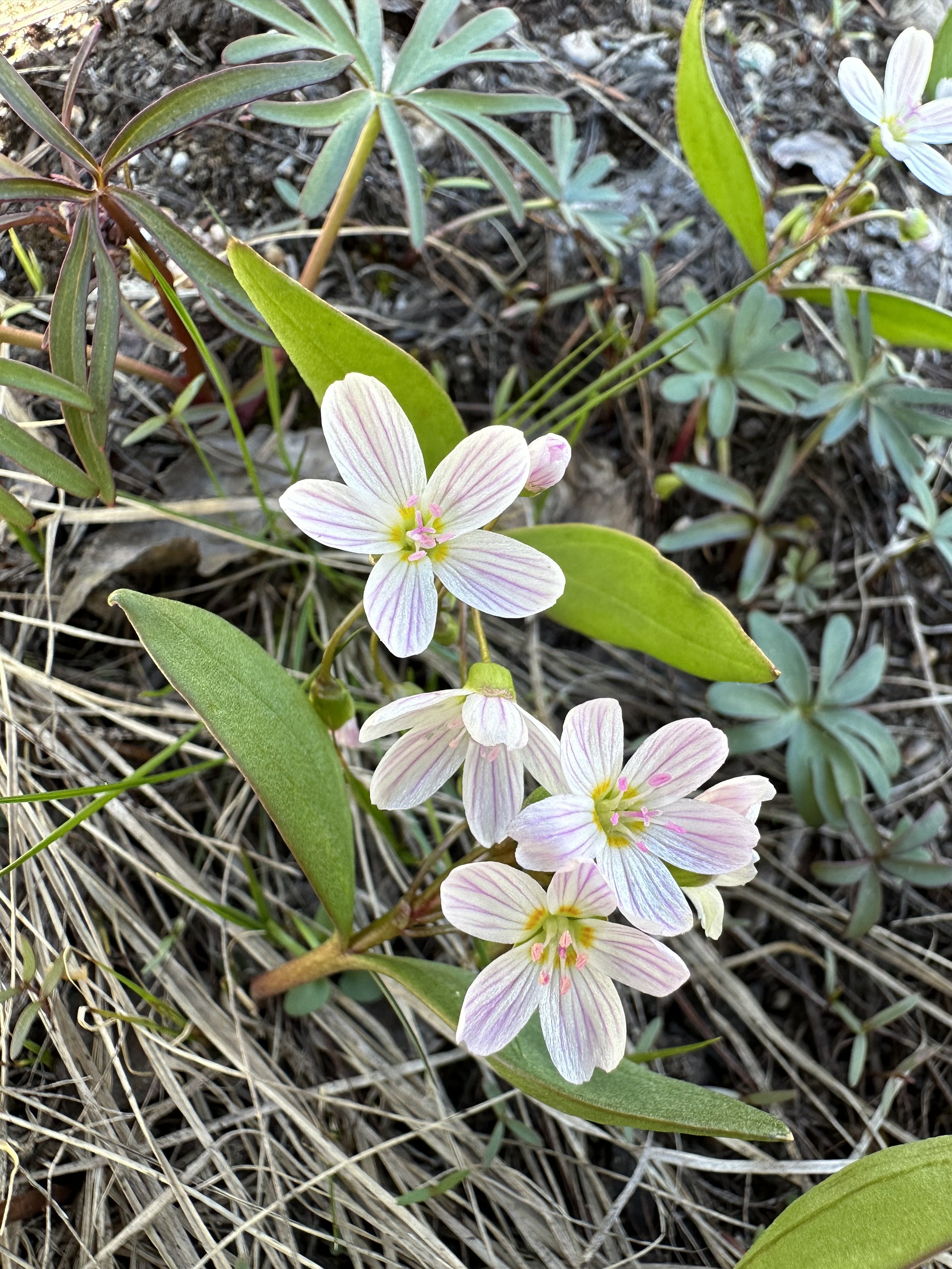Cultivating appreciation
Paxistima myrsinites, May 16, 2023
Common & scientific name
Oregon boxleaf, Paxistima myrsinites
Family
Stafftree, Celastraceae
Location
Difficult Trail, 8,100’
Fun, weird, helpful, or little known fact
Easy to miss as Oregon boxleaf’s tiny, cross-shaped flowers hide within the axils of its evergreen leaves. It’s worth taking note of these rosy gems, though, because this common shrub will be a constant companion on the lower stretches of the Pass.














